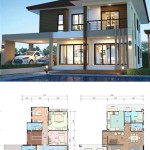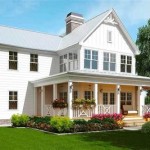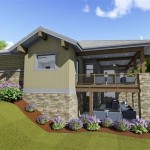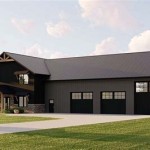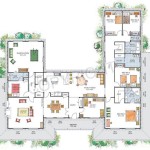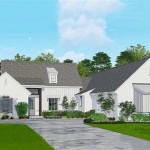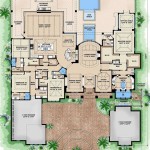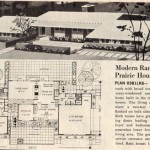Simple Floor Plan Design: Optimizing Space in a 2-Bedroom Home
The design of a 2-bedroom floor plan represents a common challenge in residential architecture: maximizing functionality and comfort within a limited footprint. Whether for a small family, a couple, or individuals seeking a guest room or home office, a well-designed 2-bedroom layout can significantly enhance the living experience.
Effective floor plan design involves careful consideration of several interdependent factors. These include the allocation of space for various activities, the flow of movement between rooms, the incorporation of natural light, and the provision of adequate storage. A simple 2-bedroom floor plan, while aiming for efficiency, should not compromise on essential aspects of livability.
Understanding the principles of space planning is crucial for creating a successful 2-bedroom layout. The size and shape of the rooms, their orientation in relation to each other, and the placement of doors and windows all contribute to the overall functionality and perceived spaciousness of the home. A well-thought-out design minimizes wasted space and ensures that each area serves its intended purpose effectively.
Additionally, considerations related to building codes, accessibility requirements, and homeowner preferences should be integrated into the design process. A simple floor plan can still adhere to these standards, ensuring that the resulting home is both functional and compliant with relevant regulations.
Key Point 1: Optimizing Living Space
The living area is often the central hub of a 2-bedroom home, serving as a space for relaxation, entertainment, and social interaction. Designing this area effectively involves careful consideration of furniture placement, traffic flow, and natural light. Open-concept designs, which combine the living room, dining area, and kitchen into a single, contiguous space, are frequently employed to maximize the feeling of spaciousness. This approach allows for flexible furniture arrangements and promotes a sense of connectivity between different zones of activity.
In an open-concept layout, strategic placement of furniture can help to define distinct areas within the larger space. For example, a sofa and coffee table can delineate the living room area, while a dining table and chairs can create a separate dining zone. The use of area rugs can further enhance this separation, visually defining each space and adding warmth and texture to the overall design.
Maximizing natural light is another crucial aspect of optimizing the living space. Large windows and sliding glass doors can bring ample sunlight into the room, creating a bright and inviting atmosphere. Skylights can also be used to introduce natural light into areas that may not have direct access to windows. Proper window placement can also provide views of the surrounding landscape, further enhancing the sense of connection to the outdoors.
Storage solutions are equally important in maximizing the functionality of the living area. Built-in shelves, cabinets, and entertainment units can provide ample storage space for books, media equipment, and other belongings, helping to keep the space clutter-free. Multi-functional furniture, such as coffee tables with storage compartments or sofas with built-in shelves, can also contribute to efficient storage solutions.
The dimensions of the living room in a simple 2-bedroom plan typically range from 12ft x 15ft to 15ft x 20ft, depending on the overall square footage of the home. These dimensions allow for comfortable furniture arrangements and adequate space for circulation. The layout should also consider the placement of electrical outlets and lighting fixtures, ensuring that the space is well-equipped for its intended uses.
Key Point 2: Designing Functional Bedrooms
The bedrooms in a 2-bedroom home should provide a comfortable and private retreat for rest and relaxation. Key considerations in bedroom design include the size and layout of the room, the placement of windows and doors, and the provision of adequate storage space.
The master bedroom is typically the larger of the two bedrooms and may include an en-suite bathroom or a walk-in closet. The dimensions of the master bedroom generally range from 12ft x 12ft to 14ft x 16ft, providing ample space for a queen- or king-sized bed, bedside tables, and a dresser. The second bedroom, often used as a guest room or home office, may be slightly smaller, typically ranging from 10ft x 10ft to 12ft x 12ft.
Window placement is crucial for maximizing natural light and ventilation in the bedrooms. Windows should be positioned to allow for cross-ventilation, promoting airflow and reducing the need for air conditioning. The orientation of the windows should also be considered, as south-facing windows will provide the most sunlight throughout the day, while north-facing windows will provide more consistent, diffused light.
Storage is a key consideration in bedroom design. Closets should be adequately sized to accommodate clothing, shoes, and other personal belongings. Walk-in closets are a desirable feature in the master bedroom, providing ample storage space and organization options. Built-in shelves and cabinets can also be used to supplement closet space and provide additional storage options. Integrating storage solutions into the design of the bedrooms helps to minimize clutter and create a more serene and relaxing environment.
The placement of doors should also be carefully considered. Doors should be positioned to minimize interference with furniture placement and maximize the use of space. Pocket doors or sliding doors can be used in areas where space is limited, such as in small bathrooms or closets. The swing of the door should also be considered, ensuring that it does not block walkways or interfere with furniture arrangements.
Accessibility is another important consideration in bedroom design. The bedrooms should be easily accessible to individuals with mobility limitations. Doorways should be wide enough to accommodate wheelchairs or walkers, and hallways should be free of obstacles. The layout of the room should also allow for easy maneuverability for individuals with mobility limitations.
Key Point 3: Kitchen and Bathroom Efficiency
The kitchen and bathrooms are critical areas in a 2-bedroom home, requiring careful planning to optimize functionality and efficiency. The design of these spaces should consider the needs of the occupants, the available square footage, and the overall aesthetic of the home.
The kitchen is the heart of many homes, and its design should prioritize functionality and ease of use. Key considerations in kitchen design include the layout of the appliances, the amount of counter space, and the availability of storage. Common kitchen layouts include the galley kitchen, the L-shaped kitchen, and the U-shaped kitchen. Each layout offers different advantages and disadvantages, depending on the size and shape of the space.
The galley kitchen is a narrow, linear layout with cabinets and appliances running along both walls. This layout is efficient for small spaces but may feel cramped if not properly designed. The L-shaped kitchen features cabinets and appliances along two perpendicular walls, creating a more open and spacious feel. The U-shaped kitchen, with cabinets and appliances along three walls, offers the most counter space and storage but requires a larger footprint.
Counter space is essential for food preparation and should be carefully considered in the kitchen design. Ample counter space should be provided on either side of the sink and stove, as well as near the refrigerator. The use of islands can also provide additional counter space and storage.
Storage is another key consideration in kitchen design. Cabinets should be strategically placed to maximize storage capacity and accessibility. Pull-out shelves, lazy Susans, and other organizational tools can help to make the most of available cabinet space. A pantry or other designated storage area should also be included for storing food and kitchen supplies.
Bathrooms should be designed to be functional and comfortable, even in limited square footage. The layout of the bathroom should consider the placement of the toilet, sink, and shower or bathtub. A common bathroom layout includes a vanity with a sink, a toilet, and a shower or bathtub along one wall. Shower stalls, rather than bathtubs, tend to save space, especially when thoughtfully fitted with sleek glass doors or screens.
Storage is important in bathrooms to neatly hold toiletries and cleaning supplies. Vanity storage can hold some essentials, while installing a recessed medicine cabinet over the sink maximizes space and accessibility. Wall-mounted shelving or cabinets provide even more storage, especially when strategically placed above the toilet or tucked into corners.
Good ventilation is crucial in bathrooms to prevent moisture buildup and mold growth. An exhaust fan should be installed to remove moisture from the air after showering or bathing. Windows can also provide ventilation and natural light.
In a 2-bedroom home, the bathroom dimensions often range from 5ft x 8ft to 8ft x 10ft. These dimensions allow for a standard bathroom layout with a toilet, sink, and shower or bathtub. In master bathrooms, dimension can go upwards of 8ft x 12ft, perhaps making space for split vanities and larger showers.
By carefully considering these factors, a simple two-bedroom floor plan can be designed to meet the needs of its occupants, maximizing functionality. Adhering to these principles ensures a comfortable and efficient living environment.

5 Small And Simple 2 Bedroom House Designs With Floor Plans

Unique 2 Bedrooms House Plans With Photos New Home Design De

Simple Two Bedroom Single Floor House With 68 M² Area Pinoy Designs

Simple 2 Bedroom House Plan 21271dr Architectural Designs Plans

Two Bedroom Small House Design Shd 2024030 Pinoy Eplans

Simple Two Bedroom House Plans In Kenya To Co Ke 7d

Two Bedrooms House Floor Plan Template

Practical 2 Bedroom House Plan With L Shaped Kitchen

House Plan Design 2 Bedroom Free Floor Creator Tutorial Autocad Drawing

Plan 76346 Modern Style With 2 Bed 1 Bath
Related Posts

